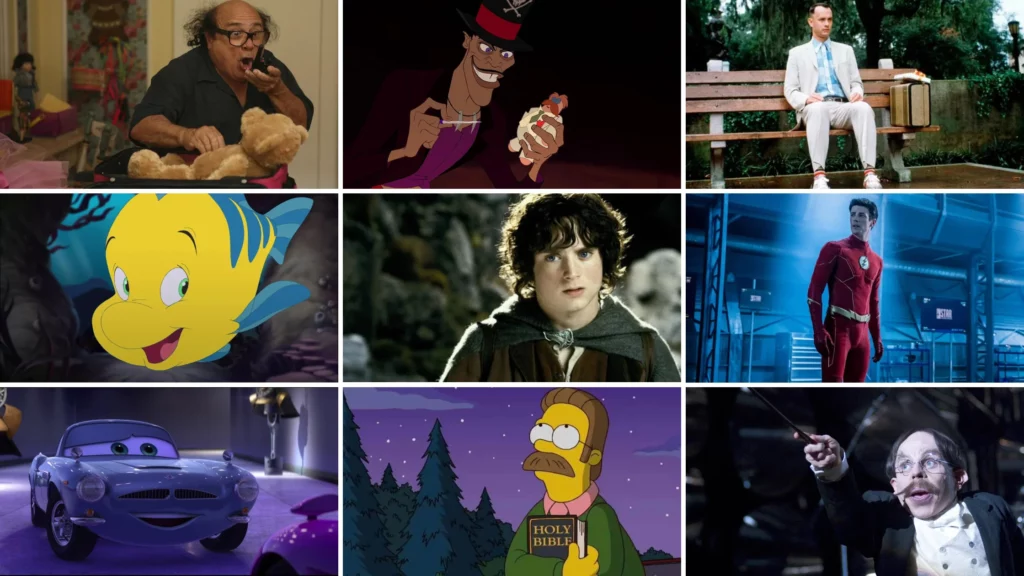Welcome to our exploration of the world of iconic fictional characters, where we delve into the letter “F” in all its glory! From the noble to the notorious, characters beginning with F have enriched our cultural landscape across various realms—literature, film, television, and comics. Each brings a unique legacy to the world of fiction.
In this post, we’ll dive into the lives of 39 phenomenal characters whose names begin with “F,” exploring their significance, the worlds they inhabit, and the impact they’ve had on audiences around the globe.
These characters do more than play their roles; they inspire, challenge, entertain, and sometimes even change how we see the world. So, let’s uncover the 39 best fictional characters beginning with F.
Characters Beginning With F
Frodo Baggins (The Lord of the Rings)
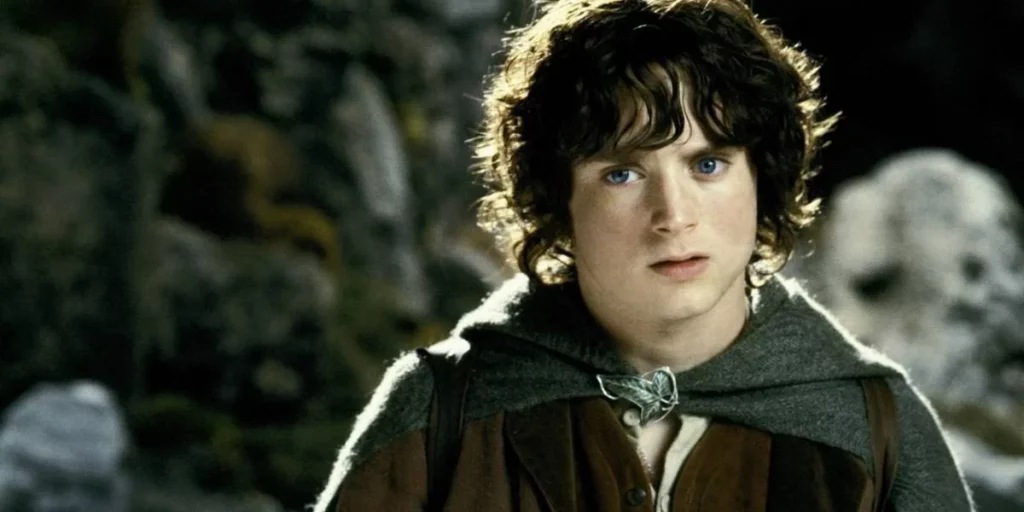
Frodo Baggins, the brave and determined hobbit from J.R.R. Tolkien’s “The Lord of the Rings,” is entrusted with the perilous task of destroying the One Ring. His journey from the Shire to the heart of Mordor is a tale of immense courage, friendship, and the struggle between good and evil. Frodo’s character exemplifies the power of resilience and the importance of hope, making him a beloved figure in both literature and film.
Frodo first appeared in “The Fellowship of the Ring” (1954) and has since been central to the “The Lord of the Rings” trilogy. His portrayal by Elijah Wood in Peter Jackson’s film adaptations has solidified his iconic status. Frodo’s character explores themes such as the burden of responsibility, the corrupting influence of power, and the value of companionship. His enduring legacy continues to inspire fans around the world.
Frankenstein’s Monster (Frankenstein)
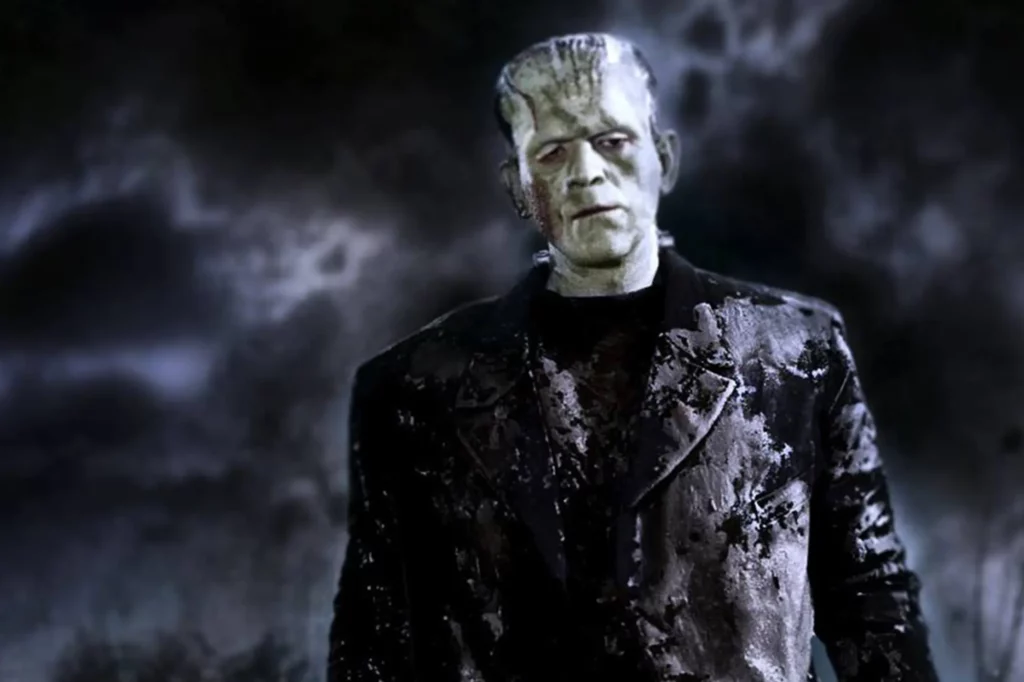
Frankenstein’s Monster, the tragic creation of Victor Frankenstein in Mary Shelley’s “Frankenstein,” delves into themes of humanity, isolation, and the consequences of playing God. As an artificial being brought to life, the Monster faces rejection and fear from society, leading to a profound exploration of loneliness and identity.
First introduced in “Frankenstein” (1818), the Monster has become a staple of gothic horror, influencing numerous adaptations in film, literature, and other media. His portrayal in the 1931 film “Frankenstein,” with Boris Karloff’s iconic performance, has become particularly emblematic. The Monster’s quest for acceptance and understanding continues to resonate, highlighting the ethical dilemmas associated with scientific experimentation and the need for compassion.
Freddy Krueger (A Nightmare on Elm Street)
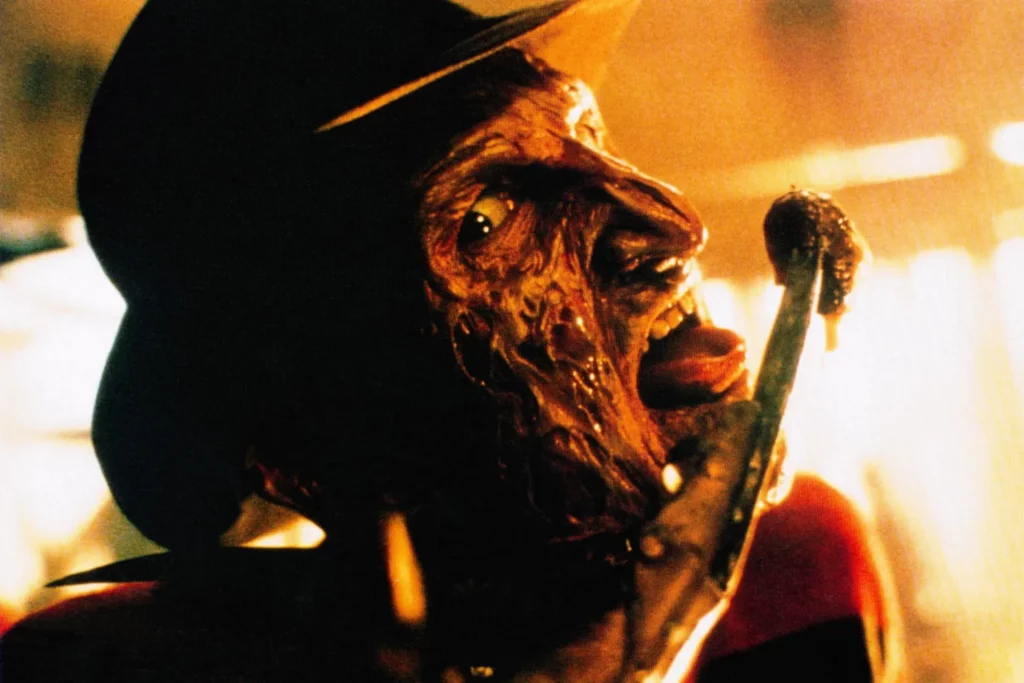
Freddy Krueger, the terrifying dream-stalking villain from the “A Nightmare on Elm Street” series, is a figure that has become synonymous with horror cinema. Known for his burned visage, razor-glove, and haunting one-liners, Freddy embodies the fear of nightmares made real, terrorising victims in their sleep.
Created by Wes Craven and first appearing in “A Nightmare on Elm Street” (1984), Freddy Krueger has appeared in numerous sequels, crossovers, and a reboot. Robert Englund’s portrayal of Freddy has been particularly influential in cementing his status as a horror icon. Freddy’s character explores the themes of vengeance, the power of fear, and the blurring lines between reality and dreams, making him a lasting figure in the genre’s history.
Faramir (The Lord of the Rings)
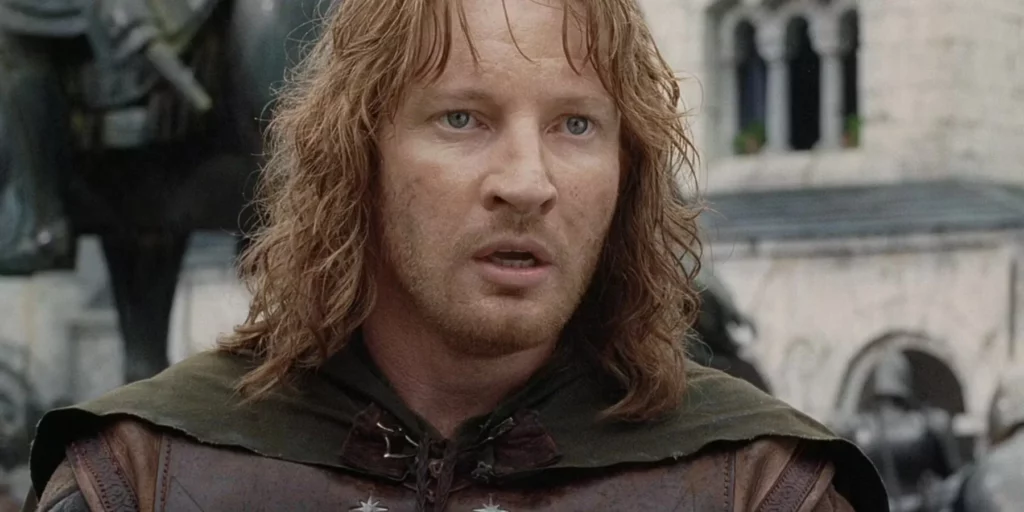
Faramir, a noble and introspective character in J.R.R. Tolkien’s “The Lord of the Rings,” is known for his wisdom, humility, and bravery. As the younger brother of Boromir and the son of Denethor, the Steward of Gondor, Faramir’s character contrasts sharply with his more ambitious and aggressive family members.
Faramir first appeared in “The Two Towers” (1954) and was portrayed by David Wenham in Peter Jackson’s film adaptations. His character is instrumental in the story, particularly in his interactions with Frodo and Sam and his crucial decisions regarding the One Ring. Faramir’s journey highlights themes of redemption, the burdens of leadership, and the importance of moral integrity. His ability to resist the Ring’s temptation and his compassionate nature make him a beloved character in the Tolkien universe.
Flounder (The Little Mermaid)
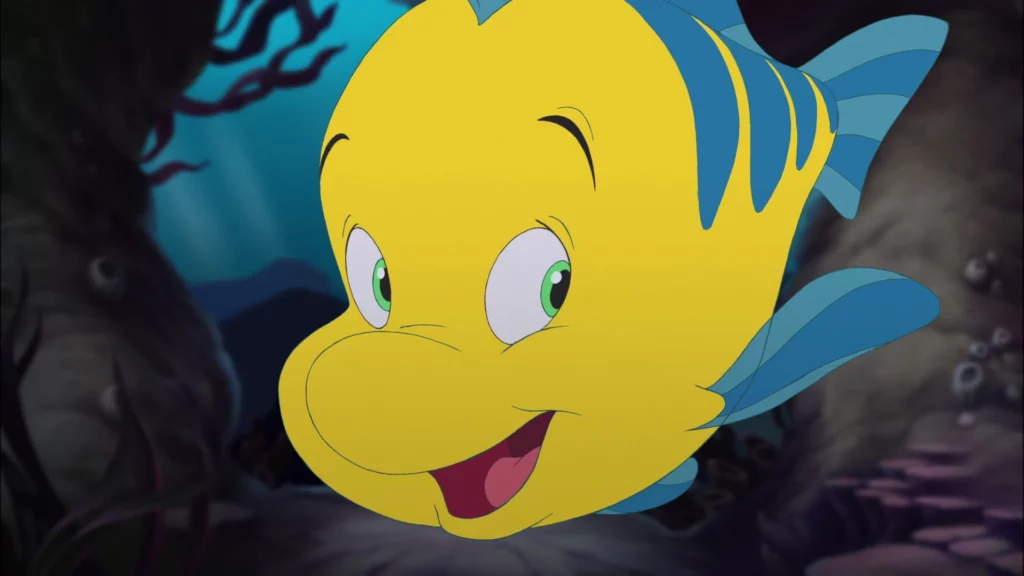
Flounder, the loyal and timid fish companion in Disney’s “The Little Mermaid,” provides a sense of warmth and friendship in Ariel’s underwater adventures. Known for his nervous disposition and unwavering support for Ariel, Flounder’s character adds a touch of innocence and loyalty to the story.
Flounder first appeared in Disney’s “The Little Mermaid” (1989) and has since been featured in various sequels, television series, and merchandise. Voiced by Jason Marin in the original film, Flounder’s friendship with Ariel underscores the themes of loyalty, courage, and the importance of having supportive friends. Despite his fears, Flounder often finds the bravery to assist Ariel in her quests, highlighting the value of true friendship and the strength found in companionship.
Fred Flintstone (The Flintstones)
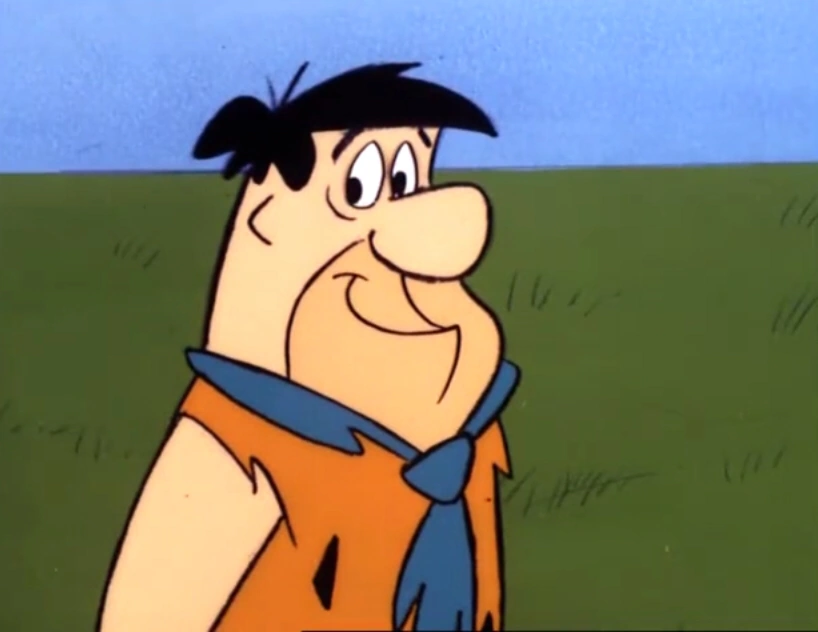
Fred Flintstone, the boisterous and lovable patriarch of the Flintstone family, brings humour and charm to the prehistoric town of Bedrock. Known for his catchphrase “Yabba-Dabba-Doo!” Fred’s adventures with his family and friends highlight themes of family life, friendship, and the timeless human condition.
Fred first appeared in “The Flintstones” (1960), the first prime-time animated television series. His character, voiced by Alan Reed, has become an enduring symbol of classic animation, influencing various spin-offs, movies, and merchandise. Fred’s humorous take on suburban life, combined with the show’s unique prehistoric setting, continues to entertain and resonate with audiences of all ages.
Forrest Gump (Forrest Gump)
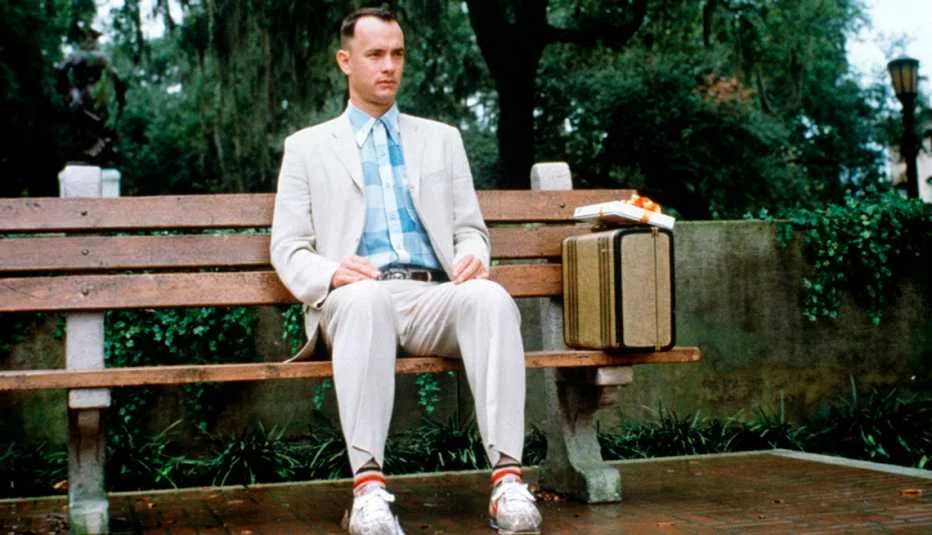
Forrest Gump, the titular character in the film “Forrest Gump,” is known for his simple wisdom and extraordinary life journey. From his childhood in Greenbow, Alabama, to his unwitting involvement in major historical events, Forrest’s story emphasises themes of destiny, love, and perseverance.
Portrayed by Tom Hanks in the 1994 film directed by Robert Zemeckis, Forrest Gump’s character has become an iconic figure in American cinema. His memorable quotes, such as “Life is like a box of chocolates,” and his heartfelt journey through life’s ups and downs have left a lasting impact on audiences. Forrest’s character celebrates the virtues of kindness, integrity, and resilience, making his story a poignant and inspirational tale.
The Flash
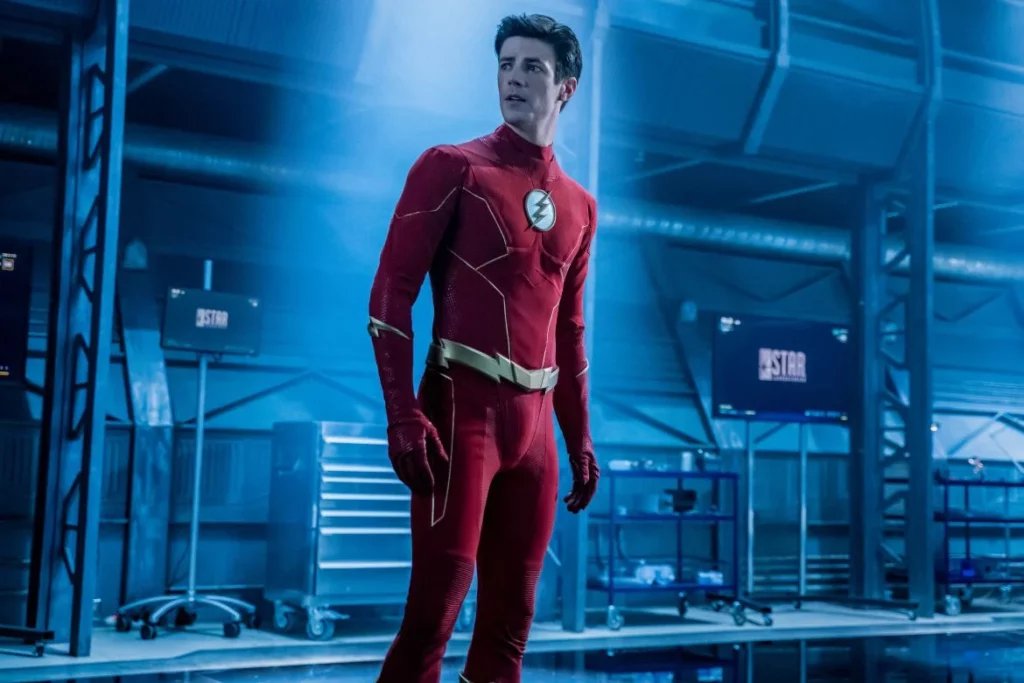
The Flash, also known as Barry Allen, is the fastest man alive in the DC Universe. With his super-speed abilities, he can move at incredible velocities, travel through time, and even vibrate through solid objects. Barry’s character is central to many storylines in the DC Universe, embodying themes of heroism, sacrifice, and justice.
The Flash first appeared in “Showcase” #4 (1956) and has since been a staple in DC Comics, with numerous adaptations in television and film. The CW’s “The Flash” series, starring Grant Gustin, has brought the character widespread popularity in recent years. The Flash’s adventures often explore the ethical implications of his powers, the complexities of time travel, and the enduring fight against evil, making him a beloved superhero across generations.
Fairy Godmother (Cinderella)
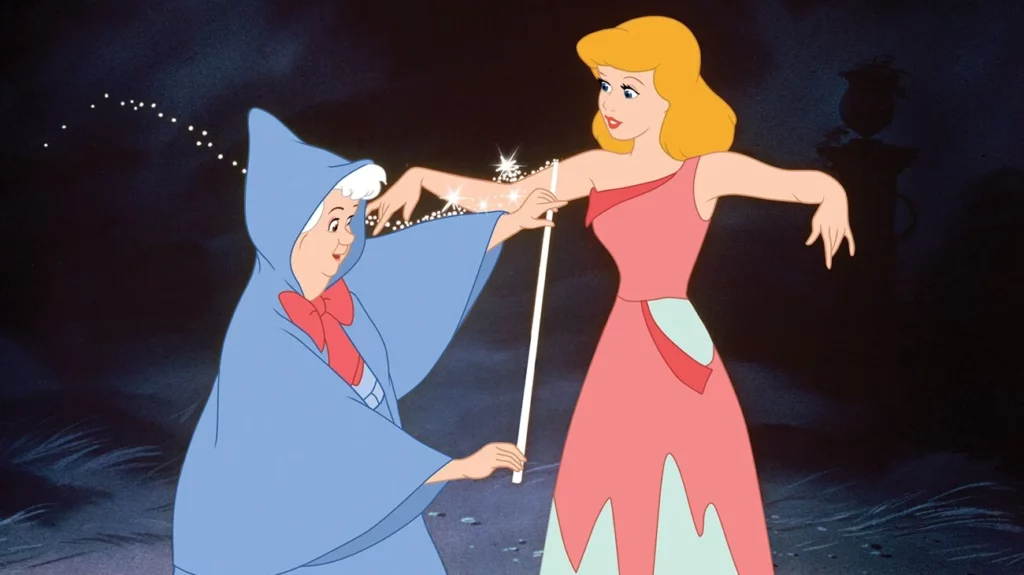
The Fairy Godmother in Disney’s “Cinderella” is a symbol of magic, hope, and transformation. With a wave of her wand and the iconic phrase “Bibbidi-Bobbidi-Boo,” she helps Cinderella overcome her hardships and find happiness. Her character embodies the fairy tale’s timeless message of kindness and belief in the impossible.
The Fairy Godmother first appeared in Disney’s “Cinderella” (1950) and has since become an iconic figure in the Disney pantheon. She has appeared in various adaptations, including live-action films and television specials. The Fairy Godmother’s role is to bring about positive change and reward goodness, reinforcing the importance of kindness, generosity, and faith in fairy tales and beyond.
Falcon (Marvel Cinematic Universe)
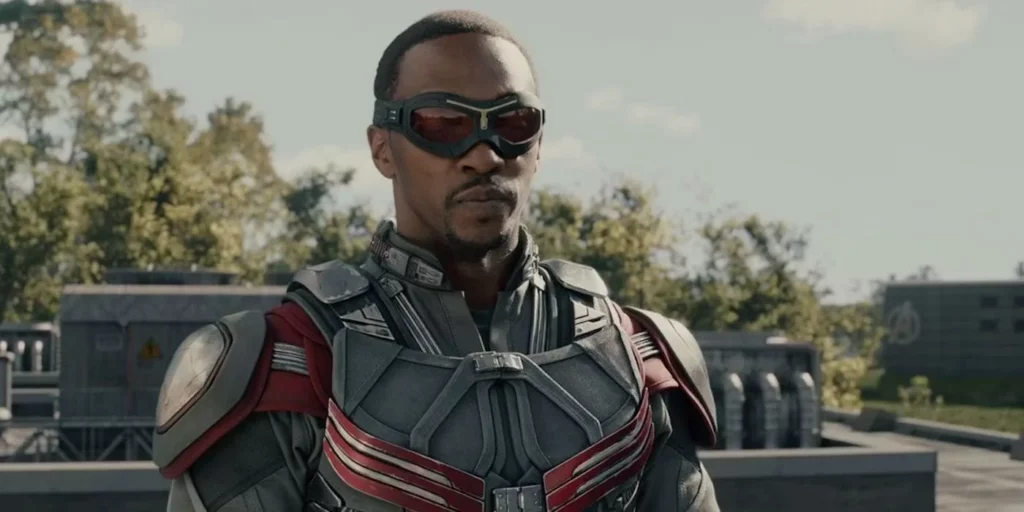
Falcon, also known as Sam Wilson, is a key character in the Marvel Cinematic Universe. Initially introduced as a skilled Air Force veteran with a specialised wingsuit, Sam’s character evolves significantly, eventually taking up the mantle of Captain America. Falcon’s journey highlights themes of legacy, justice, and the fight for equality.
Falcon first appeared in “Captain America: The Winter Soldier” (2014) and has since been a prominent figure in the MCU, particularly in “Captain America: Civil War” and the Disney+ series “The Falcon and the Winter Soldier.” Portrayed by Anthony Mackie, Falcon’s character explores the responsibilities of heroism, the complexities of his role in a changing society, and the enduring importance of fighting for what is right.
Princess Fiona (Shrek 2)
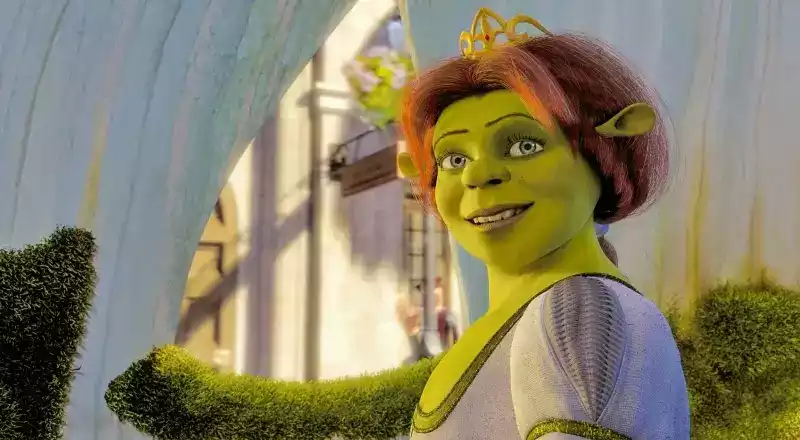
Princess Fiona from the “Shrek” series breaks the mould of traditional fairy tale princesses with her strength, independence, and sense of humour. Initially introduced as a damsel in distress, Fiona reveals layers of complexity, including her curse that transforms her into an ogre at night. Her character explores themes of self-acceptance and the true meaning of beauty.
Fiona first appeared in “Shrek” (2001) and has been a central character in the subsequent films of the franchise. Voiced by Cameron Diaz, Fiona’s journey from a secretive princess to embracing her identity as an ogre reflects a modern twist on classic fairy tales. Her love story with Shrek emphasises the importance of looking beyond appearances and finding beauty within.
Freddy Fazbear (Five Nights at Freddy’s)
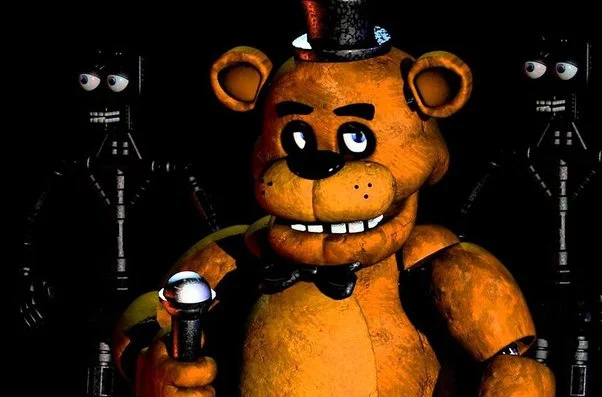
Freddy Fazbear, the animatronic mascot of the “Five Nights at Freddy’s” series, is central to the game’s horror and mystery. As the leader of the haunted animatronics at Freddy Fazbear’s Pizza, Freddy adds a chilling presence to the franchise, which has captivated and terrified gamers worldwide.
Created by Scott Cawthon and first appearing in the original “Five Nights at Freddy’s” game (2014), Freddy Fazbear has become an iconic figure in modern horror gaming. The series’ unique blend of suspense, jump scares, and complex lore has made Freddy a staple in the genre. Freddy’s character explores themes of fear, survival, and the unknown, providing players with an unforgettable and nerve-wracking experience.
Fred Weasley (Harry Potter)
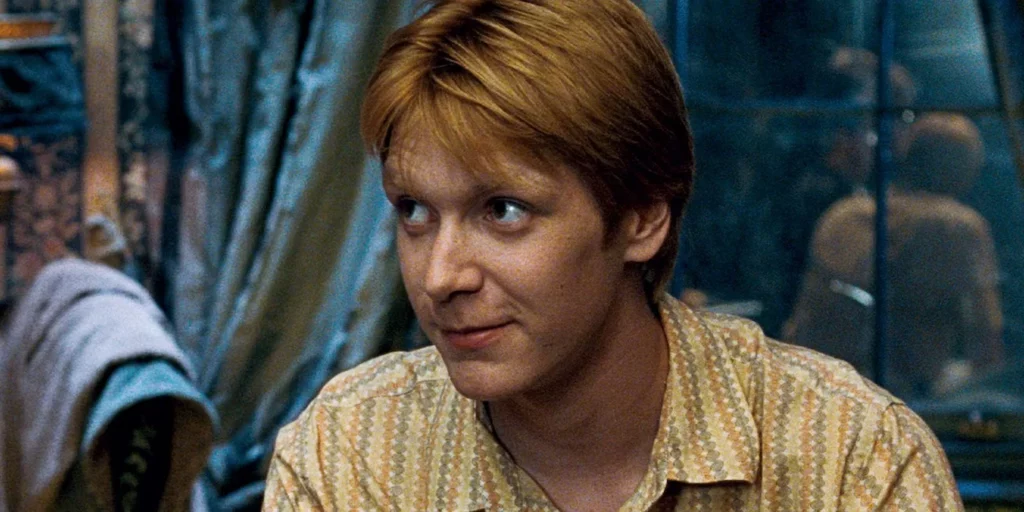
Fred Weasley, one half of the Weasley twins in the “Harry Potter” series, is known for his humour, bravery, and entrepreneurial spirit. Alongside his twin brother George, Fred brings laughter and lightness to Hogwarts, even in the darkest times. His character adds a significant emotional depth to the series, particularly through his loyalty and ultimate sacrifice.
Fred first appeared in “Harry Potter and the Philosopher’s Stone” (1997) and was portrayed by James Phelps in the film adaptations. His character, alongside George, founded Weasleys’ Wizard Wheezes, a successful joke shop that becomes a symbol of resistance and hope. Fred’s bravery in the face of danger and his tragic end during the Battle of Hogwarts highlight the themes of courage, loss, and the power of family in the Harry Potter series.
Filch (Harry Potter)
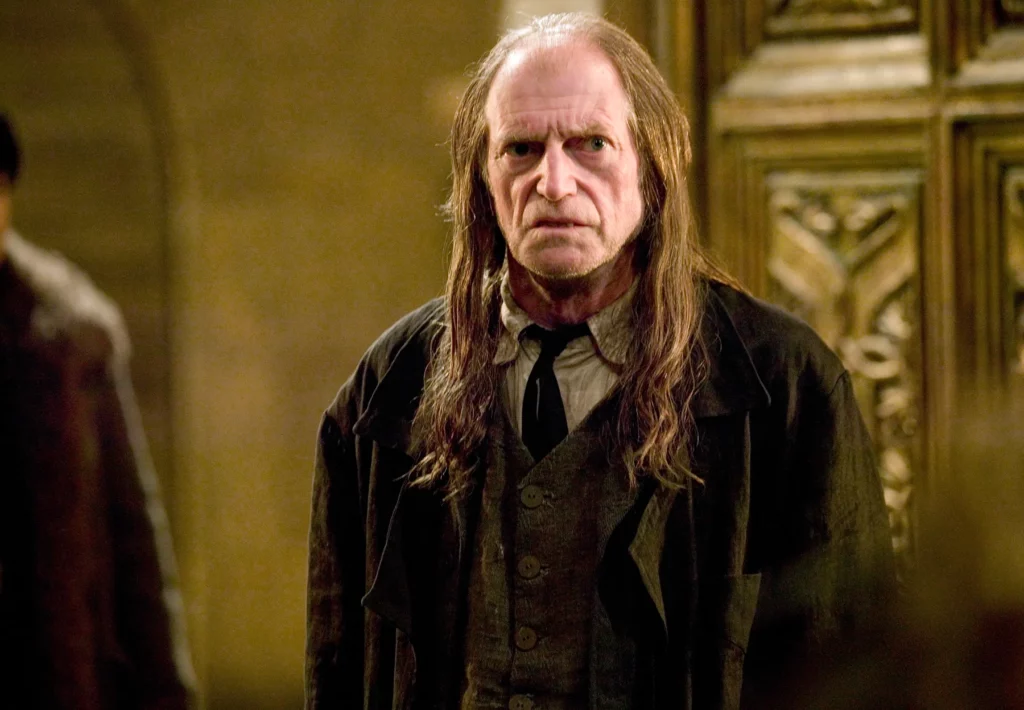
Argus Filch, the grumpy caretaker of Hogwarts, brings a unique blend of humour and menace to the “Harry Potter” series. Known for his strictness and his cat Mrs. Norris, Filch is often seen patrolling the corridors and enforcing school rules, much to the students’ annoyance. Despite his stern exterior, his character adds a layer of depth and realism to the magical world of Hogwarts.
Filch first appeared in “Harry Potter and the Philosopher’s Stone” (1997) and was portrayed by David Bradley in the film series. His status as a Squib (a non-magical person born to magical parents) and his longing for magical abilities make him a complex and sympathetic figure. Filch’s character highlights the challenges of being an outsider in a magical community and adds a touch of ordinary human struggle to the enchanting world of Harry Potter.
Fleur Delacour (Harry Potter)
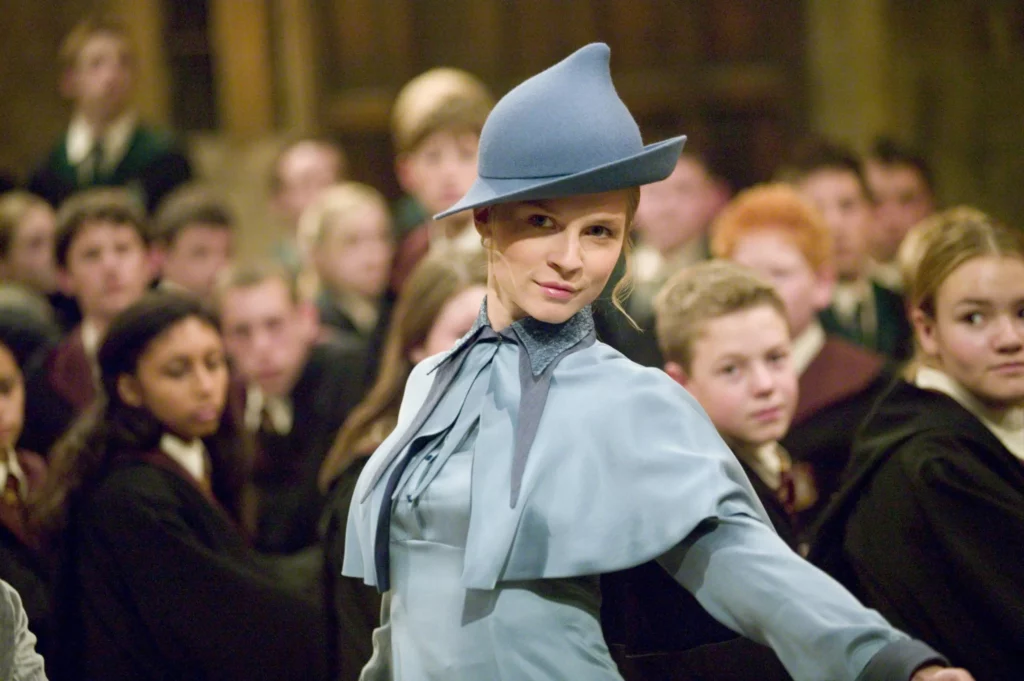
Fleur Delacour, a competitor in the Triwizard Tournament, showcases bravery, elegance, and loyalty. As a student of Beauxbatons Academy and later a member of the Weasley family, Fleur’s character brings an international perspective to the wizarding world. Her participation in the tournament and subsequent marriage to Bill Weasley emphasise themes of unity and collaboration across different cultures.
Fleur first appeared in “Harry Potter and the Goblet of Fire” (2000) and was portrayed by Clémence Poésy in the film adaptations. Despite initial perceptions of being aloof and vain, Fleur proves her courage and kindness, particularly during the Battle of Hogwarts. Her character arc reflects the growth and development of her personality, showing her as a strong, loving, and fiercely loyal witch.
Filius Flitwick (Harry Potter)
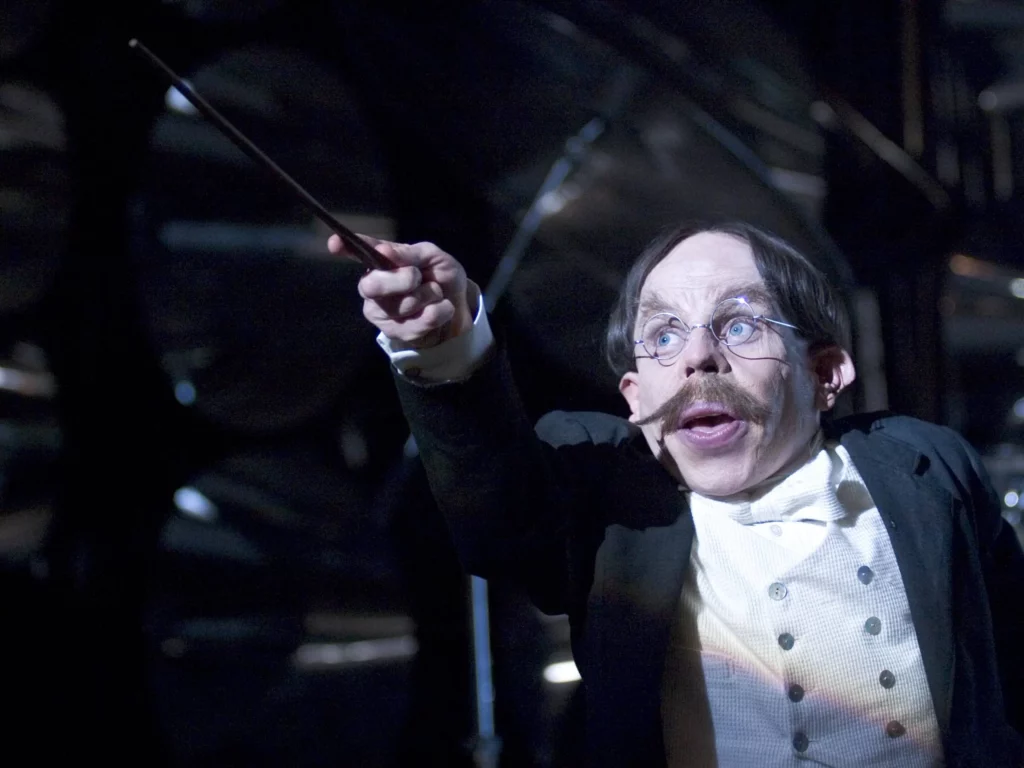
Filius Flitwick, the Charms professor at Hogwarts, is a beloved character known for his expertise and cheerful personality. As the head of Ravenclaw House, Flitwick plays a crucial role in teaching and guiding young witches and wizards, particularly in the art of charms and spells. His character underscores the importance of knowledge, kindness, and dedication in the wizarding world.
Flitwick first appeared in “Harry Potter and the Philosopher’s Stone” (1997) and was portrayed by Warwick Davis in the film series. His diminutive stature and high-pitched voice make him a distinctive figure, while his vast magical knowledge and prowess in duelling demonstrate his significant power and influence. Flitwick’s character adds warmth and wisdom to the Hogwarts faculty, highlighting the values of education and mentorship.
Flynn Rider (Tangled)
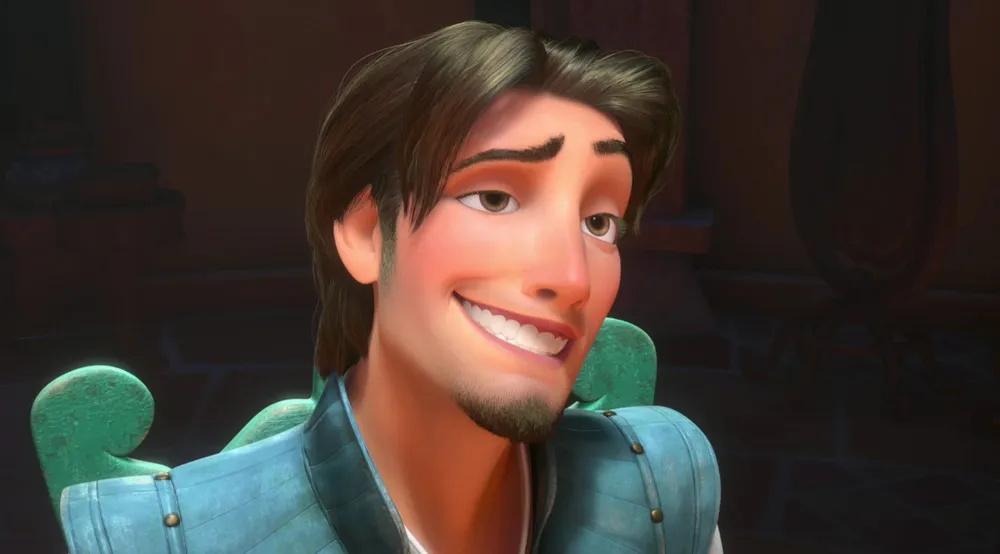
Flynn Rider, the charming rogue from Disney’s “Tangled,” adds wit and adventure to the classic fairy tale. Initially a selfish thief seeking fortune, Flynn’s journey with Rapunzel transforms him into a selfless hero who discovers the true meaning of love and sacrifice. His character’s transformation highlights themes of redemption and personal growth.
Flynn, whose real name is Eugene Fitzherbert, first appeared in Disney’s “Tangled” (2010) and was voiced by Zachary Levi. His swashbuckling adventures, combined with his humorous and endearing personality, make him a standout character in Disney’s lineup. Flynn’s relationship with Rapunzel and his evolution from a wanted criminal to a devoted partner illustrate the power of love and the possibility of change.
Frozone (The Incredibles)
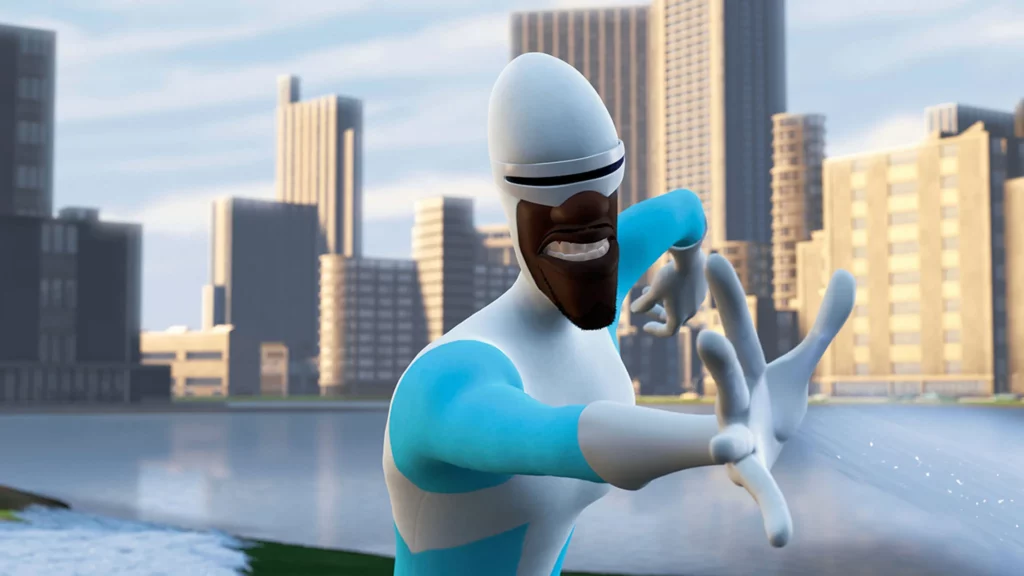
Frozone, also known as Lucius Best, is the ice-powered superhero from Pixar’s “The Incredibles.” A close friend of Mr. Incredible, Frozone brings a cool demeanour and quick wit to the superhero team. His ability to generate ice and his smooth style make him a standout character, adding both humour and action to the story.
Frozone first appeared in “The Incredibles” (2004) and returned in “Incredibles 2” (2018), voiced by Samuel L. Jackson. His dynamic powers and memorable lines, such as “Where is my super suit?” have made him a fan favourite. Frozone’s character explores themes of friendship, responsibility, and the balance between superhero duties and personal life.
Frank Castle (The Punisher)
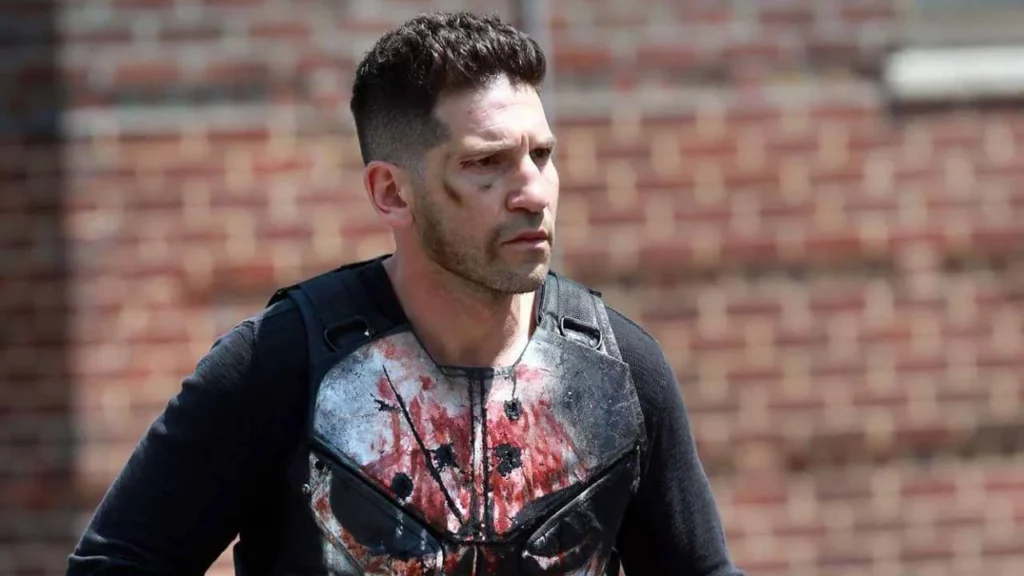
Frank Castle, also known as The Punisher, is a vigilante driven by a desire for justice and revenge following the brutal murder of his family. His relentless pursuit of criminals, often through lethal means, sets him apart from other superheroes, highlighting the darker side of heroism and the consequences of vengeance.
The Punisher first appeared in “The Amazing Spider-Man” #129 (1974) and has since become a central figure in Marvel Comics, with multiple adaptations in film, television, and video games. Jon Bernthal’s portrayal in the Netflix series “The Punisher” has been particularly acclaimed. Frank Castle’s character delves into themes of morality, justice, and the psychological effects of trauma, presenting a complex and often controversial figure in the superhero genre.
Fred Jones (Scooby-Doo)
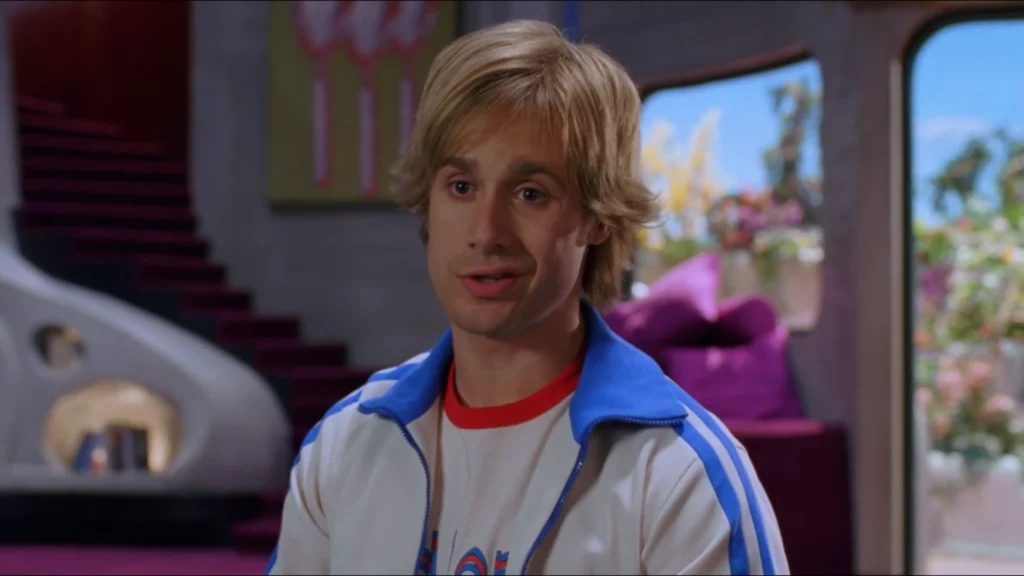
Fred Jones, the leader of the Mystery Inc. gang in “Scooby-Doo,” is known for his bravery, leadership, and knack for setting traps. His character adds a sense of adventure and problem-solving to the beloved series, often leading the gang in their investigations to unmask various villains.
Fred first appeared in “Scooby-Doo, Where Are You!” (1969) and has been a central character in the numerous adaptations and spin-offs of the franchise. Voiced originally by Frank Welker, Fred’s character embodies the archetypal team leader, always ready to take charge and solve mysteries. His dedication to his friends and his unwavering commitment to uncovering the truth make him a cherished figure in animated television.
Finn (Adventure Time)

Finn, the adventurous human boy in “Adventure Time,” is known for his heroic deeds and loyal friendship with Jake the Dog. Set in the magical Land of Ooo, Finn’s adventures are filled with surreal encounters and moral dilemmas, making his journey both entertaining and thought-provoking.
Finn first appeared in the pilot episode of “Adventure Time” (2007) and has been a central character throughout the series, voiced by Jeremy Shada. His character explores themes of bravery, imagination, and the complexities of growing up. Finn’s unwavering sense of justice and his willingness to help those in need make him an enduring and inspirational character for audiences of all ages.
Frank Gallagher (Shameless)

Frank Gallagher, the shameless patriarch of the Gallagher family in “Shameless,” is known for his reckless behaviour and flawed humanity. His character explores themes of family, addiction, and survival in a comedic yet poignant manner, offering a raw depiction of life’s struggles.
Frank first appeared in the US adaptation of “Shameless” (2011), portrayed by William H. Macy. His character, while often engaging in morally questionable actions, brings a depth of complexity to the series, highlighting the impact of addiction and poverty on family dynamics. Frank’s interactions with his children and his relentless pursuit of pleasure, despite the consequences, provide both humour and heartbreak, making him a compelling and multifaceted character.
Frank Reynolds (It’s Always Sunny in Philadelphia)
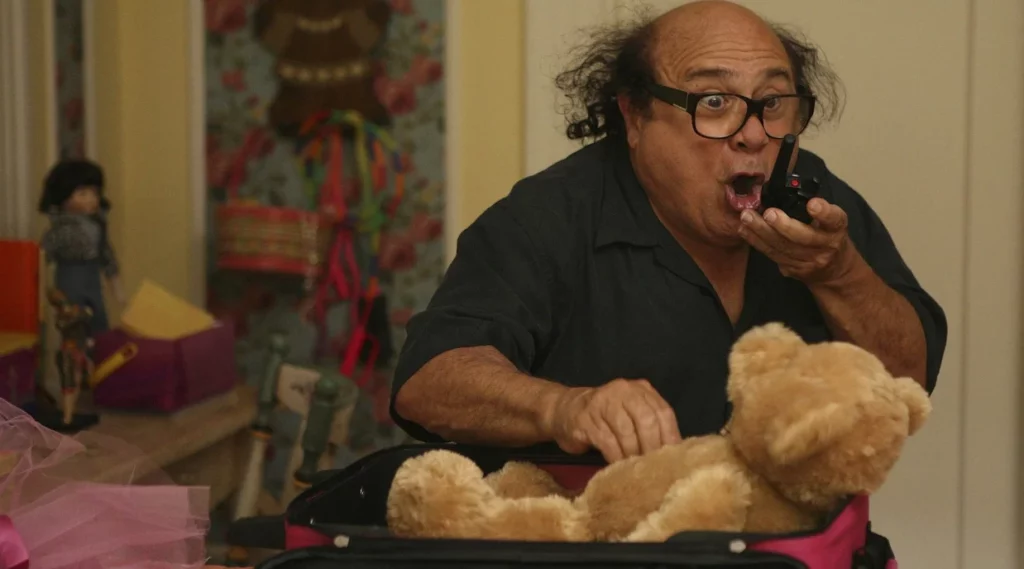
Frank Reynolds, the eccentric and unscrupulous businessman in “It’s Always Sunny in Philadelphia,” brings chaotic energy and dark humour to the show. Known for his outrageous schemes and lack of moral compass, Frank’s character highlights themes of greed, corruption, and the absurdities of modern life.
Portrayed by Danny DeVito, Frank first appeared in the second season of “It’s Always Sunny in Philadelphia” (2006). His character’s antics, combined with DeVito’s comedic timing, have made Frank a standout figure in the series. Frank’s interactions with the other members of the “gang” often lead to hilariously disastrous outcomes, providing a biting satire of contemporary societal norms and values.
Fozzie Bear (The Muppet Show)
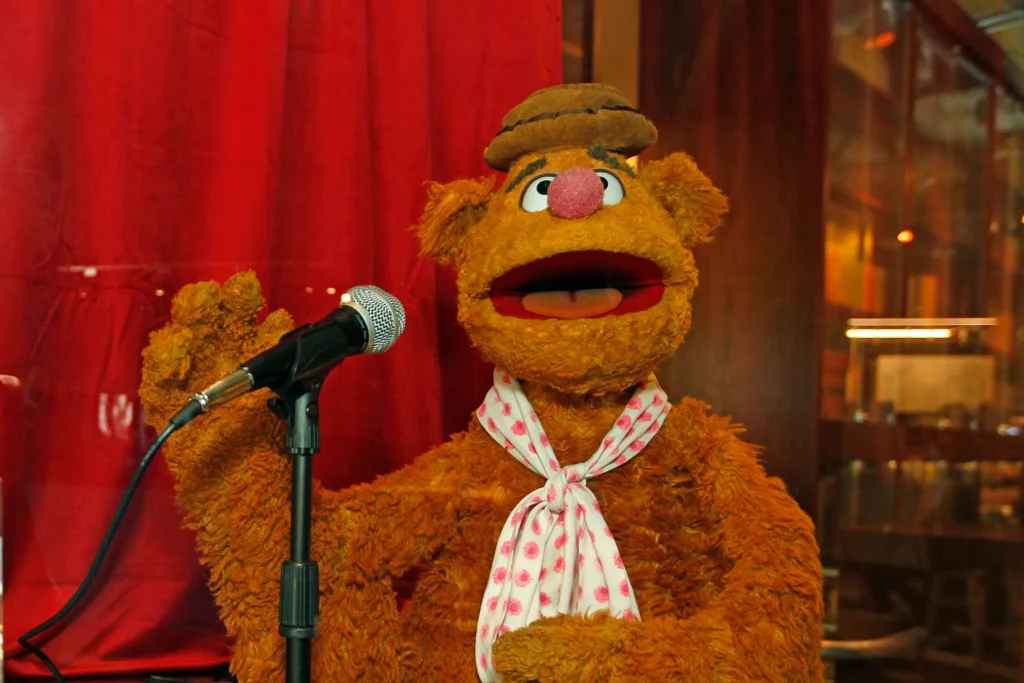
Fozzie Bear, the lovable comedian of the Muppet troupe, is known for his bad jokes and unwavering optimism. His character adds heart and humour to “The Muppet Show,” emphasising the importance of perseverance and friendship despite numerous failed comedic attempts.
Fozzie first appeared in “The Muppet Show” (1976) and has been a beloved character in various Muppet films and television specials. Voiced by Frank Oz and later Eric Jacobson, Fozzie’s enduring charm lies in his earnestness and resilience. His constant efforts to entertain, despite often being the butt of the joke, make him a relatable and endearing figure who embodies the spirit of never giving up.
Fear (Inside Out)

Fear, one of the core emotions depicted in Pixar’s “Inside Out,” plays a crucial role in keeping Riley safe. His character provides a humorous yet insightful look at the importance of fear in our emotional landscape, highlighting its protective and cautionary functions.
Voiced by Bill Hader, Fear is a pivotal character in “Inside Out” (2015), contributing to the film’s exploration of emotional intelligence and psychological well-being. While often portrayed in a comedic light, his character underscores the necessity of fear in maintaining balance and safety in our lives. Fear’s interactions with the other emotions—Joy, Sadness, Anger, and Disgust—illustrate the complex interplay of our feelings and the integral role each emotion plays.
Dr. Facilier (The Princess and the Frog)
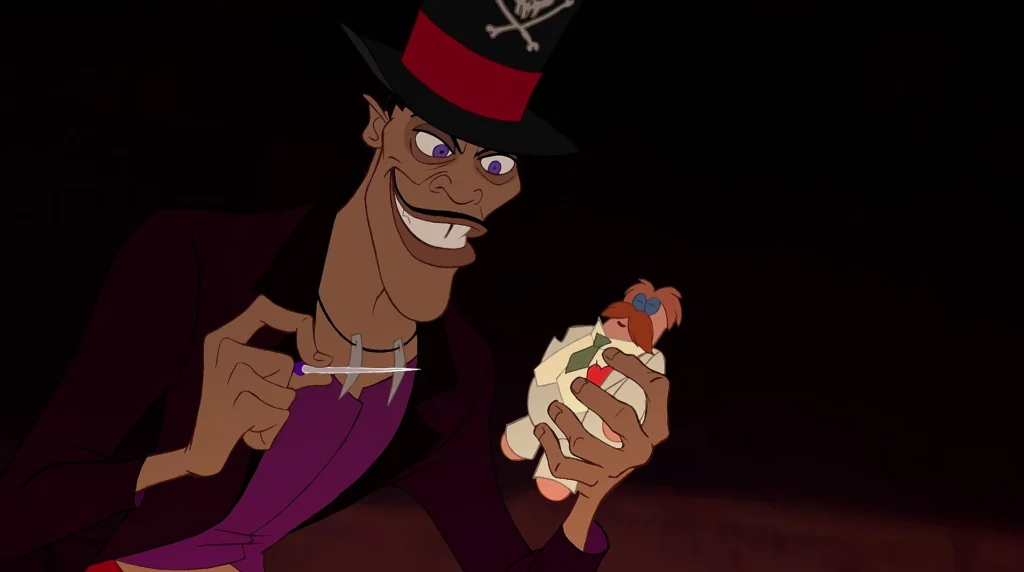
Dr. Facilier, the charismatic and sinister villain in “The Princess and the Frog,” uses dark magic to achieve his goals. Known as the Shadow Man, his character adds a thrilling and menacing presence to the film, blending charm with malevolence.
Facilier first appeared in “The Princess and the Frog” (2009), voiced by Keith David. His character’s smooth-talking demeanour and magical abilities, combined with his memorable song “Friends on the Other Side,” make him a standout Disney villain. Dr. Facilier’s story explores themes of ambition, greed, and the dangers of making deals with dark forces, providing a cautionary tale about the cost of pursuing power at any price.
Ned Flanders (The Simpsons)
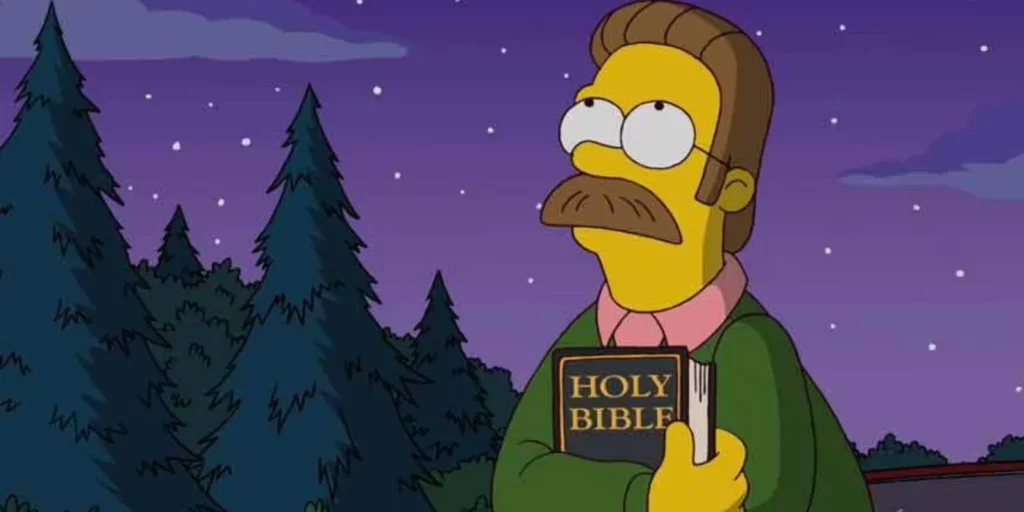
Ned Flanders, the overly friendly and devoutly religious neighbour in “The Simpsons,” is known for his optimistic outlook and catchphrases like “Hi-diddly-ho, neighborino!” His character serves as a contrast to Homer Simpson, often highlighting themes of morality, faith, and the complexities of human relationships.
First appearing in “The Simpsons” (1989), Flanders, voiced by Harry Shearer, has become an iconic character in the series. Despite his sometimes annoying piety and unwavering cheerfulness, Ned’s character is deeply human, dealing with personal loss, single parenthood, and his own doubts. Flanders’ interactions with the Simpson family provide both comedic moments and thoughtful reflections on the nature of goodness and the challenges of living a virtuous life.
Franklin (Franklin the Turtle)
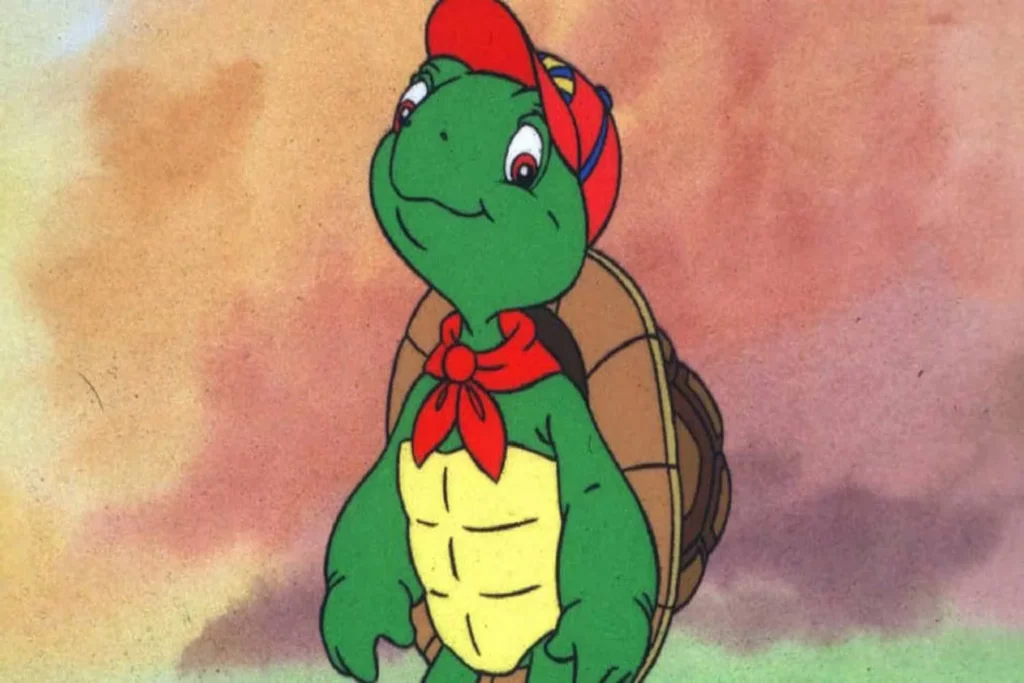
Franklin the Turtle, the titular character of the beloved children’s book series and television show “Franklin,” is known for his kind heart and curious nature. Franklin’s adventures often teach important life lessons about friendship, honesty, and growing up, making him a beloved character for young audiences.
First appearing in the book “Franklin in the Dark” (1986) by Paulette Bourgeois and illustrated by Brenda Clark, Franklin has since been the star of numerous books and an animated TV series. His relatable stories and gentle, reassuring demeanour have made Franklin a staple in children’s literature and television. Franklin’s character highlights the importance of empathy, problem-solving, and the joys of discovery.
Fairy Godmother (Shrek 2)
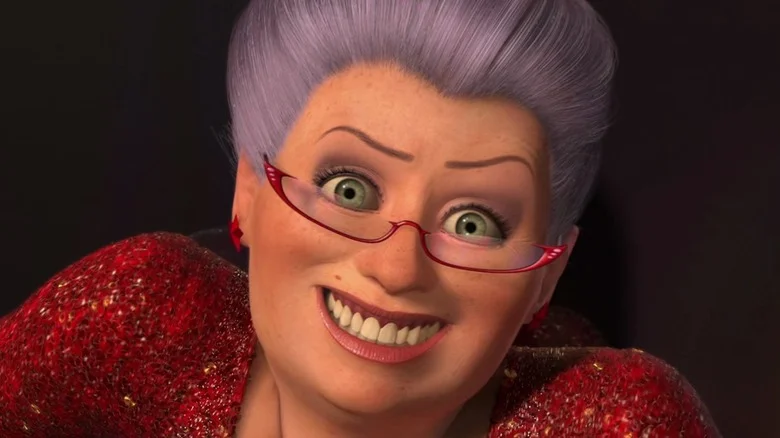
The Fairy Godmother in “Shrek 2” is a delightfully villainous character who adds a twist to the traditional fairy tale role. Unlike her benevolent counterpart in Cinderella, this Fairy Godmother is manipulative and cunning, using her magic to try and separate Shrek and Fiona for her own gain.
Voiced by Jennifer Saunders, the Fairy Godmother first appeared in “Shrek 2” (2004). Her character, with a combination of charm and malevolence, brings humour and tension to the film. Her memorable musical numbers and schemes highlight themes of power, control, and the consequences of selfish desires. The Fairy Godmother’s character serves as a satirical take on the fairy tale trope, adding depth and complexity to the Shrek universe.
Fa Li (Mulan)
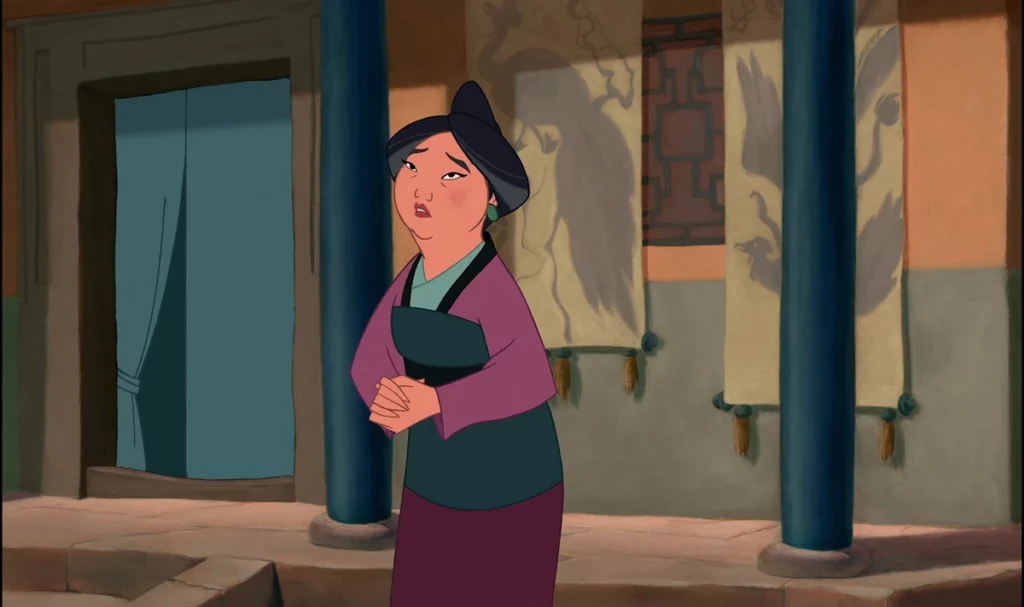
Fa Li, Mulan’s mother in Disney’s “Mulan,” is a supportive and caring figure who embodies traditional values and the importance of family. Her character, though not central to the action, provides a grounding presence and represents the emotional core of Mulan’s home life.
Fa Li first appeared in Disney’s “Mulan” (1998) and has also been featured in the 2020 live-action adaptation. Her concern for Mulan’s future and her role in the family underscore themes of duty, honour, and the generational differences in understanding one’s role in society. Fa Li’s character highlights the balance between respecting tradition and supporting personal growth, emphasising the importance of family support in the face of challenging societal expectations.
Faline (Bambi)
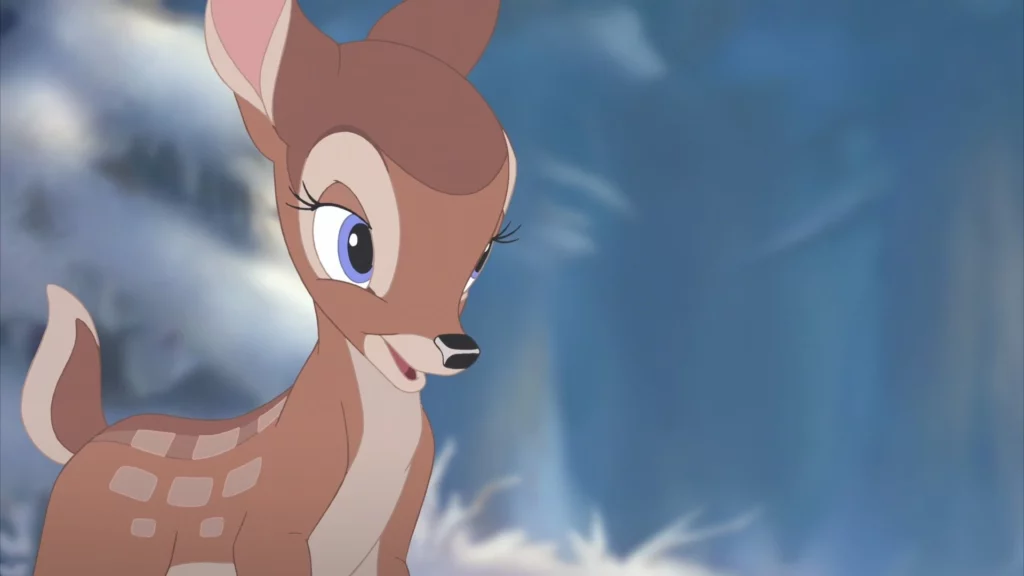
Faline, the gentle and caring doe in Disney’s “Bambi,” plays a significant role in Bambi’s journey from fawn to adulthood. As Bambi’s love interest, Faline’s character symbolises innocence, love, and the natural cycles of life.
Faline first appeared in Disney’s “Bambi” (1942), based on Felix Salten’s 1923 novel “Bambi, a Life in the Woods.” Her presence in the film highlights the themes of growth, companionship, and the beauty of nature. Faline’s character, with her gentle demeanour and nurturing qualities, provides emotional support to Bambi and represents the tenderness and continuity of life in the animal kingdom.
Flash (Zootopia)
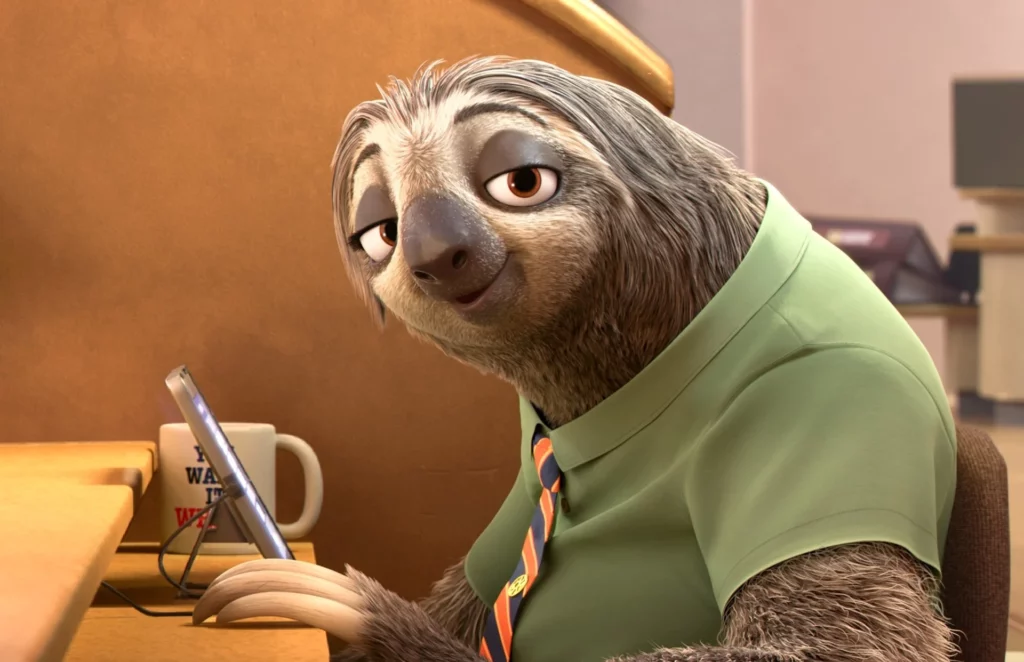
Flash, the sloth who works at the DMV in Disney’s “Zootopia,” is known for his hilariously slow pace and deadpan humour. His character adds a comedic touch to the film, highlighting the often frustrating experience of dealing with bureaucracy.
Flash first appeared in “Zootopia” (2016) and quickly became a fan favourite due to his memorable scenes and slow-motion antics. Voiced by Raymond S. Persi, Flash’s interactions with the main characters, Judy Hopps and Nick Wilde, provide a humorous contrast to the film’s fast-paced plot. Flash’s character underscores the film’s themes of perseverance and patience, while also poking fun at the slow-moving nature of certain institutions.
Ferb (Phineas and Ferb)

Ferb Fletcher, the inventive and resourceful stepbrother in the animated series “Phineas and Ferb,” is known for his engineering skills and laconic personality. While often quiet, Ferb’s actions speak louder than words as he helps create extraordinary inventions and adventures with his brother Phineas.
Ferb first appeared in “Phineas and Ferb” (2007) and quickly became a fan favourite. Voiced by Thomas Brodie-Sangster, Ferb’s character adds depth and balance to the dynamic duo, often providing the technical know-how to bring Phineas’s wild ideas to life. Ferb’s character emphasises themes of creativity, teamwork, and the boundless possibilities of imagination. His understated humour and loyal friendship highlight the joy of shared adventures and the importance of sibling bonds.
Fergus (Brave)
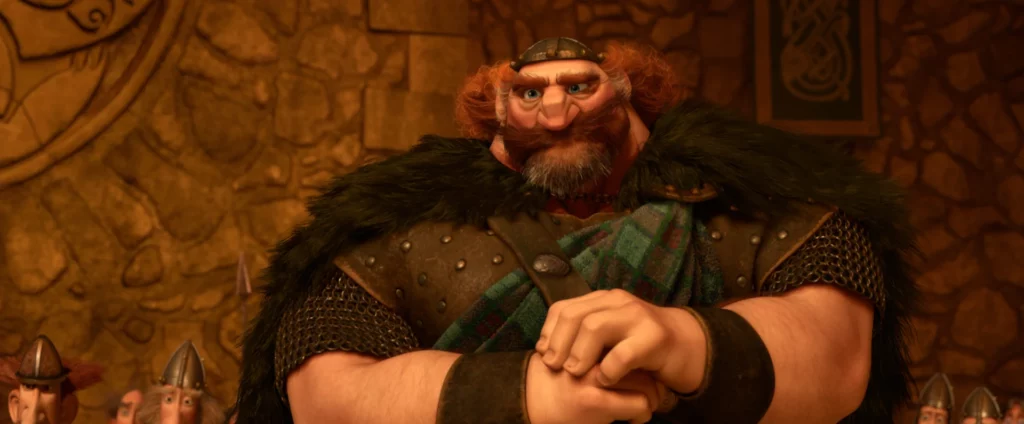
King Fergus, the boisterous and protective father in Pixar’s “Brave,” is known for his larger-than-life personality and deep love for his family. As the ruler of the clan DunBroch and a fierce warrior, Fergus’s character embodies strength, courage, and a hearty sense of humour.
Fergus first appeared in “Brave” (2012), voiced by Billy Connolly. His character is central to the film’s exploration of family dynamics, particularly his relationship with his daughter, Merida. King Fergus’s adventurous spirit and unwavering support for his family highlight themes of loyalty, bravery, and the importance of family bonds. His humorous and warm-hearted nature adds a layer of charm to the story, making him a beloved character in the Pixar lineup.
Felix (Encanto)
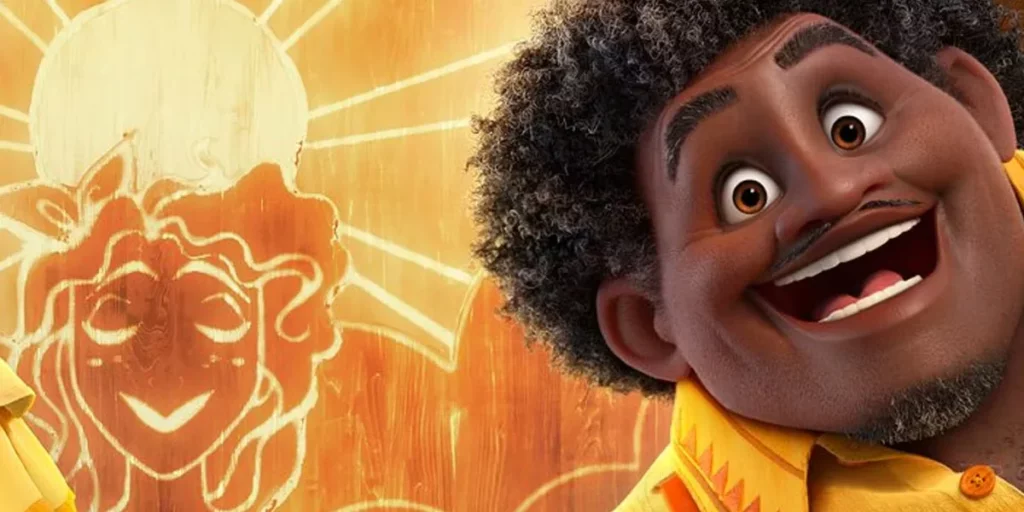
Felix Madrigal, the jovial and loving husband of Pepa Madrigal in Disney’s “Encanto,” brings warmth and joy to the magical Madrigal family. His character is known for his supportive nature and his ability to keep the family’s spirits high.
Felix first appeared in “Encanto ” (2021), voiced by Mauro Castillo. His easy going demeanour and deep love for his wife and children exemplify the importance of familial support and understanding. Felix’s character adds to the rich tapestry of personalities in the Madrigal family, highlighting themes of love, unity, and the joy of celebrating each family member’s unique gifts.
Flo (Cars)

Flo, the sassy and hospitable owner of Flo’s V8 Café in Pixar’s “Cars” series, is a character full of charm and charisma. As a key resident of Radiator Springs, Flo’s welcoming nature and strong personality make her a beloved figure in the town.
Flo first appeared in “Cars” (2006) and has been a recurring character in the subsequent films and spin-offs. Voiced by Jenifer Lewis, Flo’s character adds warmth and a sense of community to the story. Her café serves as a central gathering spot for the town’s residents, symbolising the importance of friendship and togetherness. Flo’s vivacious spirit and dedication to her friends highlight themes of hospitality, community, and the value of a supportive network.
Finn McMissile (Cars 2)
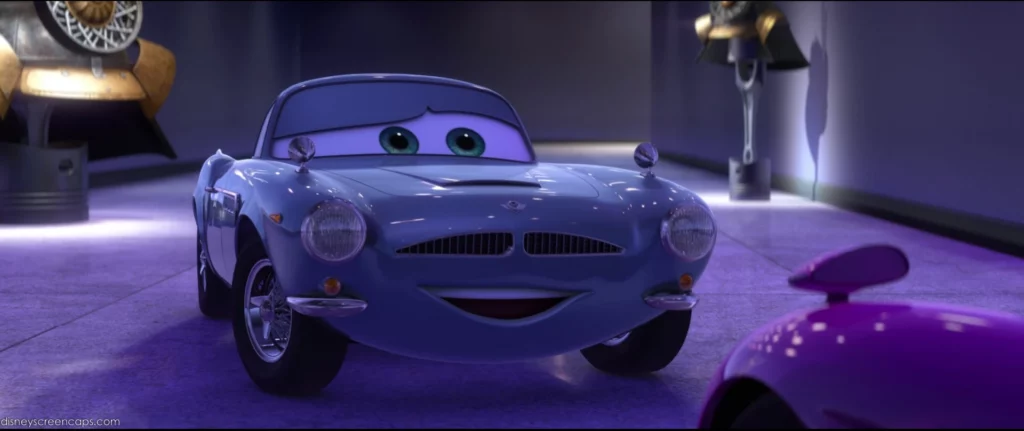
Finn McMissile, the suave British spy car in Pixar’s “Cars 2,” brings a thrilling element of espionage to the series. Known for his cool demeanour and array of high-tech gadgets, Finn’s character adds excitement and intrigue to the film.
Finn first appeared in “Cars 2” (2011), voiced by Michael Caine. His character’s involvement in a global spy plot introduces themes of adventure and mystery to the “Cars” universe. Finn’s skillful manoeuvres and quick thinking showcase the themes of bravery, intelligence, and the classic spy ethos of always being prepared. His interactions with Mater and Lightning McQueen highlight the importance of teamwork and trust in overcoming challenges.
Forky (Toy Story 4)
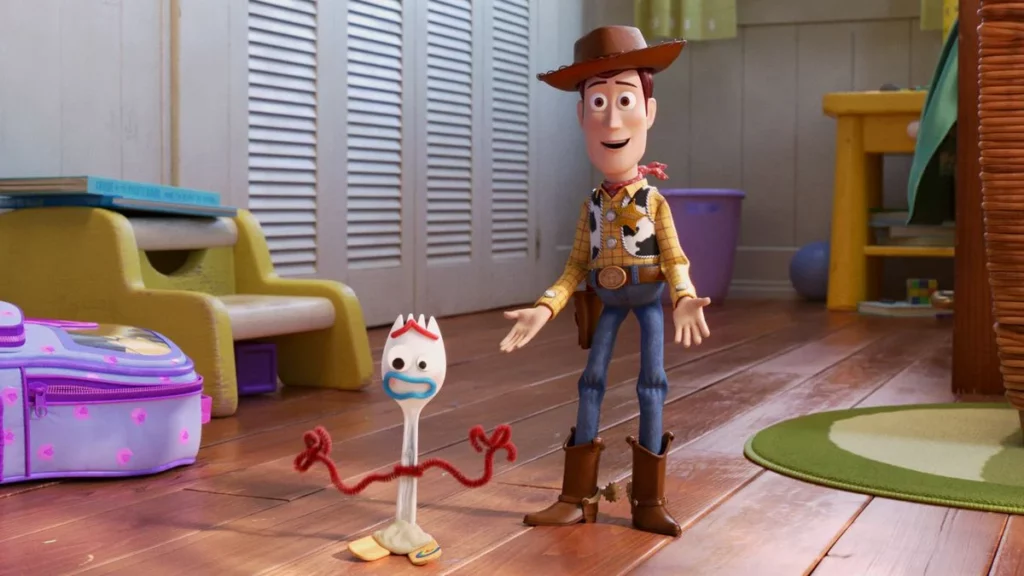
Forky, the charmingly self-doubting spork-turned-toy in “Toy Story 4,” brings a unique perspective to the beloved franchise. Created by Bonnie from discarded spork and various craft supplies, Forky’s journey of self-discovery and acceptance is both humorous and heartwarming.
Forky first appeared in “Toy Story 4” (2019), voiced by Tony Hale. His character’s existential crisis and frequent attempts to return to the trash bin provide comic relief and poignant moments. Forky’s story explores themes of identity, purpose, and the value of being loved and accepted for who you are. His endearing innocence and quest for understanding his place in the world resonate with audiences, adding a fresh and touching dimension to the “Toy Story” saga.
